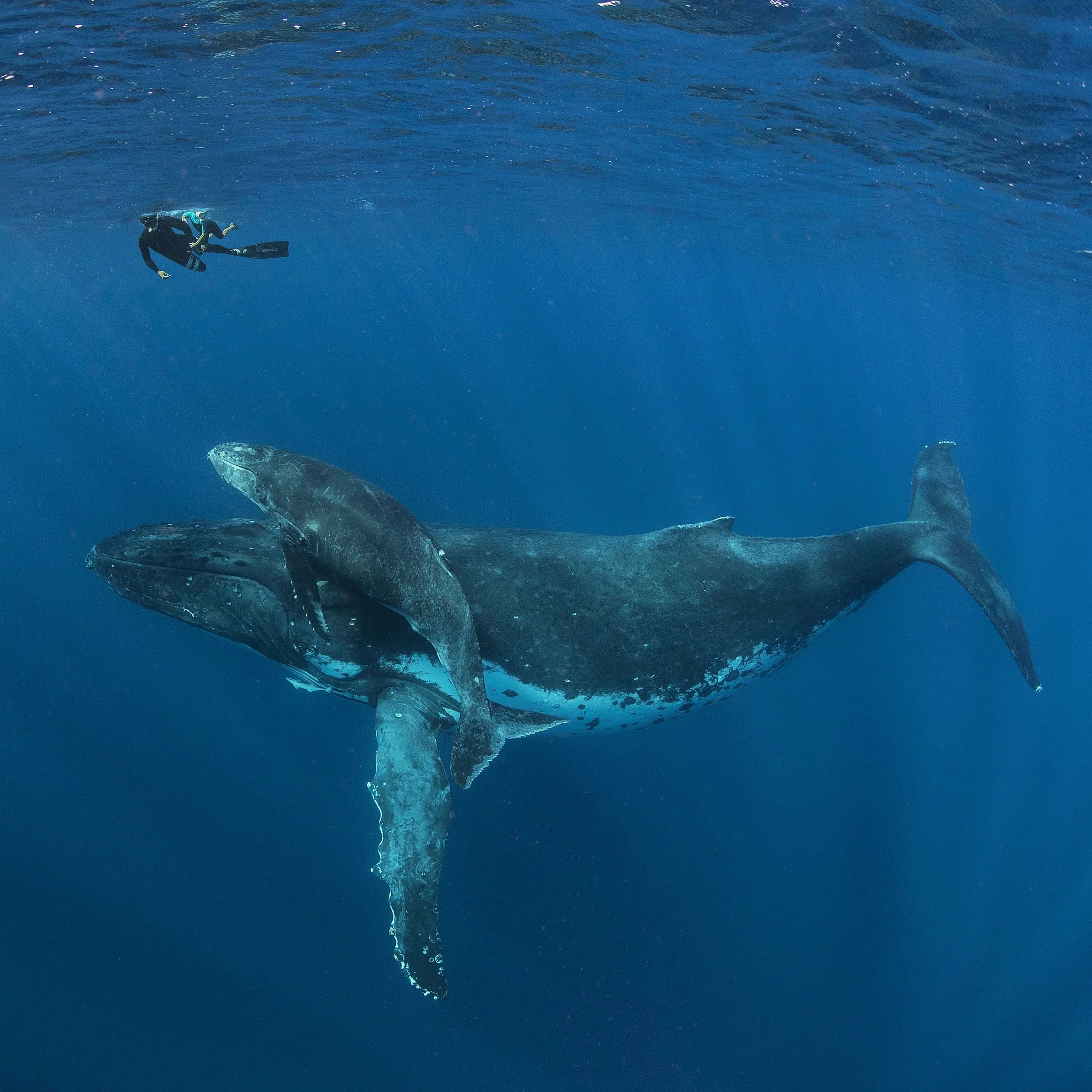Swimming with Gentle Giants
Every year, humpback whales journey to Tonga to mate and give birth in the warm, tropical waters. The first arrivals usually appear in June, and most whales have departed by November. For this reason, the peak whale season is considered to be July through October.
During this time, visitors have the rare opportunity to witness these incredible creatures in the wild. It is truly life-changing to see the towering aerial display of a breaching whale, the intensity of a “heat run” (pre-mating behavior), or to hear the haunting, soul-piercing song of a whale underwater.
Guests often leave with a deeper respect for the whales and a greater understanding of their behavior and migration. After mating and calving in the Tongan waters, the whales embark on their long journey back to Antarctica.
Allan Bowe, the designer of Mounu Island, pioneered whale swimming in the Kingdom of Tonga in 1993. His deep passion for whale conservation is carried on today by his daughter, Kirsty, who now manages the island.
If you're lucky, you might even spot whales just offshore from Mounu Island itself!
Sustainable Whale Encounters
While whale swims and encounters are undeniably magical, our mission at Mounu is to offer them responsibly, minimizing pressure on these majestic animals during their crucial mating and calving season.
The Vava’u region faces increasing challenges from over-tourism and unregulated or inexperienced operators. That’s why we strictly adhere to Tonga’s whale-watching regulations, which are designed to protect both whales and guests.
We encourage our guests to choose operators carefully, be informed and act as advocates for whale protection and respectful wildlife interaction
If you witness inappropriate or harmful whale tourism practices, please report them to the Tongan Ministry of Tourism.
At Mounu, we believe that the best whale encounters are also the most respectful ones. By following these guidelines, we ensure that both guests and whales have the space to share something extraordinary—without exploitation or harm.
Guidelines for Whale Watching Operators in Tonga
Distance and Approach
Maintain a minimum distance of 100 meters (328 feet) from the whales.
Approach whales from the side, moving parallel to their direction of travel, and should never approach head-on or from behind.
Swim With Whales Rules
Max of 4 swimmers and one guide are allowed in the water at a time with the whales.
Maintain a minimum distance of 10 meters (33 feet) from the whales.
Swimmers are prohibited from diving beneath the whale or chasing it.
Whale Behavior
Operators recognize signs of whale distress or discomfort. If a whale shows signs of stress (e.g., tail slapping, erratic movement, or diving suddenly), the boat or swimmers must leave the area.
If there is a mother with a calf, extra caution is required, and interaction times are often shorter!
Time Limits
Whale-watching encounters are limited to a maximum duration of 90 minutes to reduce stress on the animals.
Only two vessels are allowed near a group of whales at any one time to avoid overcrowding.
No queuing and hounding whales.


